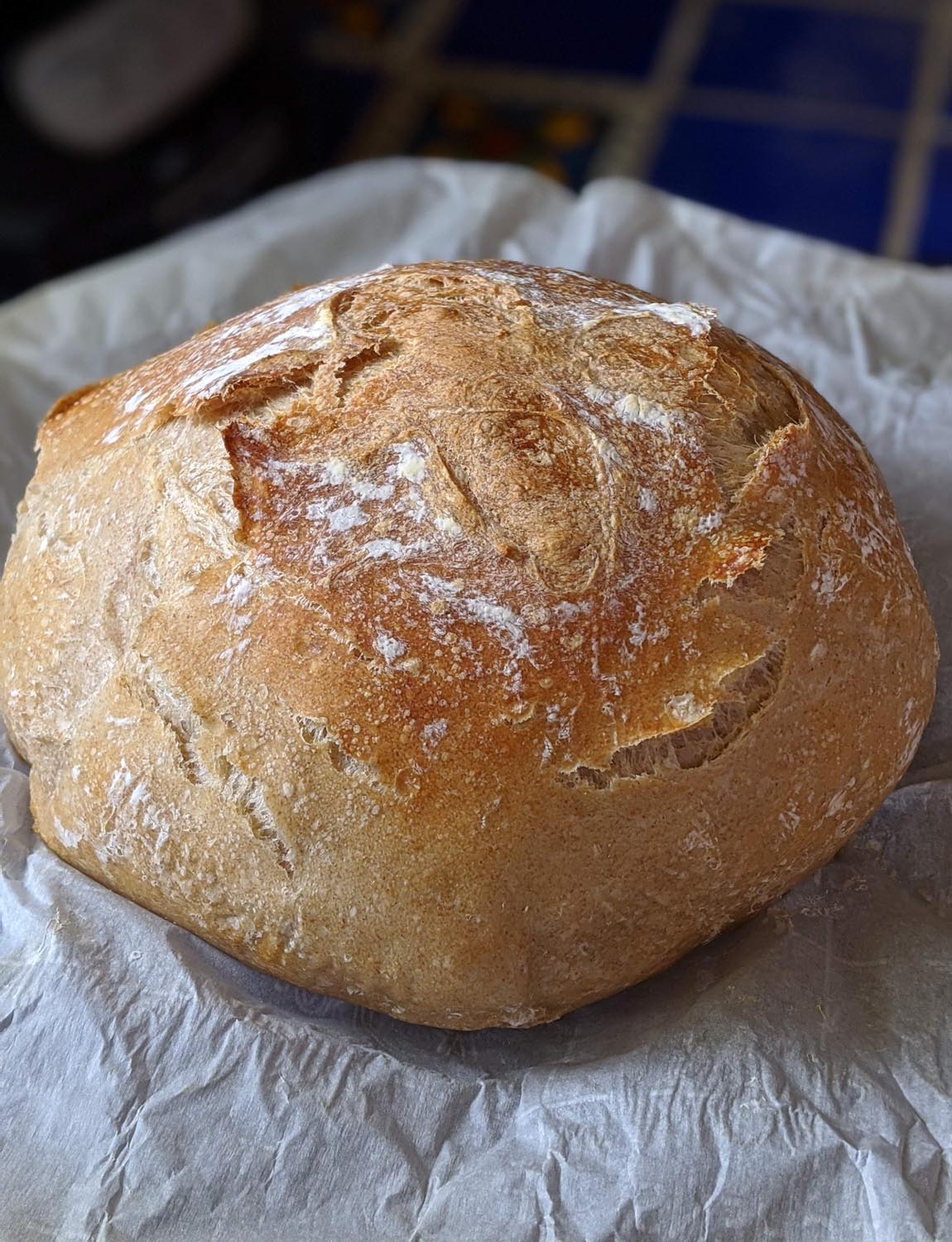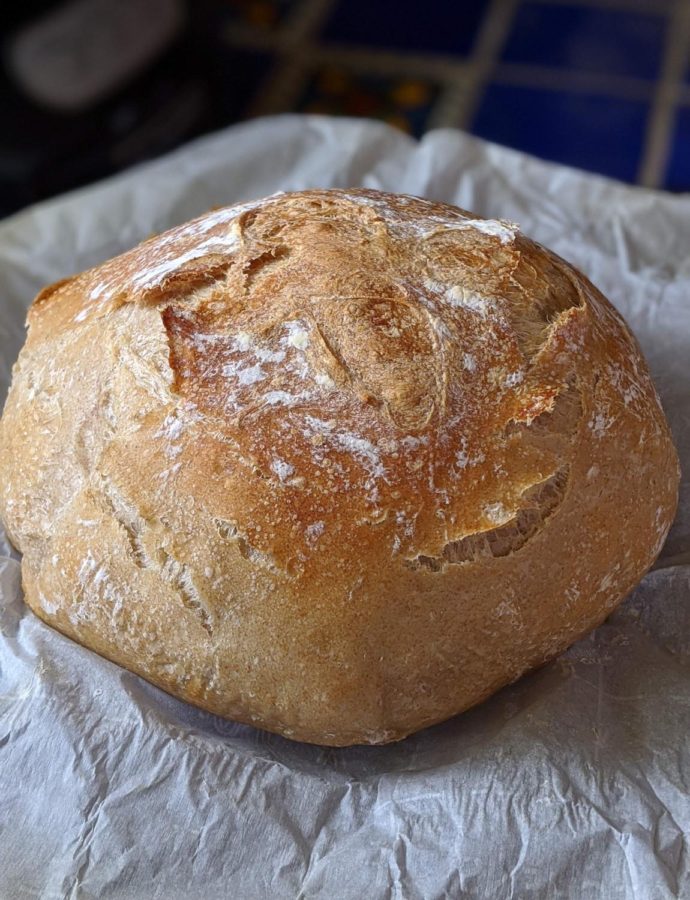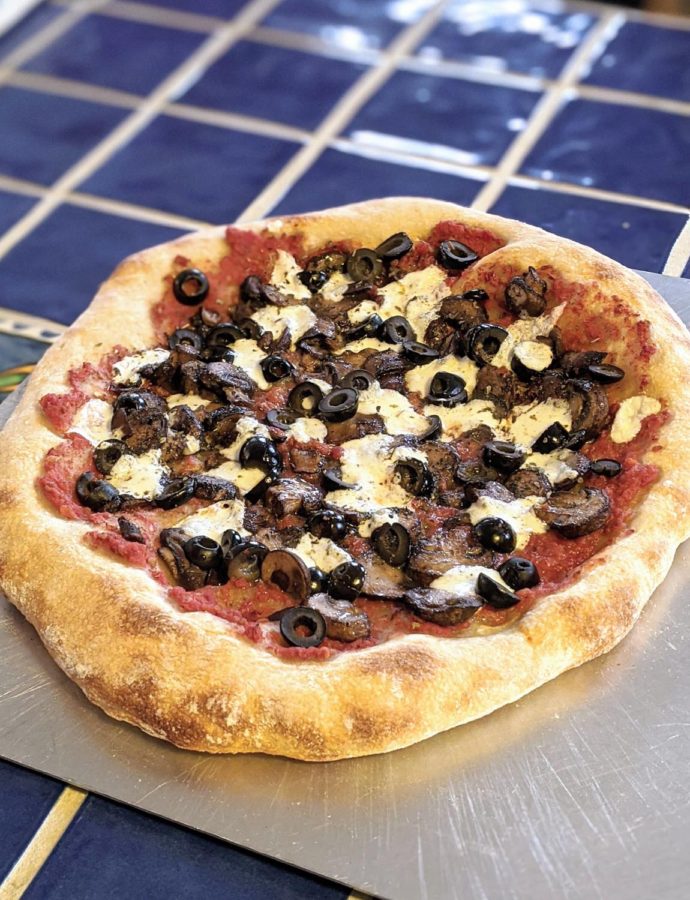How My New York Kitchen Became the Connection to Madrid


A warm, slightly sour aroma fills the kitchen on a Tuesday morning. My husband, Floren, has made it out of bed before me, and he’s baking bread. This is a rarity not because he’s Spanish and often stays up, a book propped on his lap, till nearly midnight. It’s unusual because our jobs normally separate us by 200 miles on weekdays. But almost a month into our Covid-19 isolation, we’re huddled in my house in the woods of upstate New York. We work. We watch more TV than we’d like. We do mundane chores around the house. Like most people, we’ve been sleeping poorly. And the more we stress, the more we cook.
Floren is a scientist, a man of reason and practicality. He might not have come to the United States fifteen years ago if not because the Spanish job market for physicists was reliant on the retirement or passing of tenured professors. On our third date almost a decade ago, at his little duplex in Schenectady, he made me tortilla de patata, Spain’s national treasure of an omelet, with its toothsome exterior and slightly oozy interior. I talked about it for days afterward. By the next summer, he’d created a garden in my backyard so we could grow fresh vegetables for meals, including salmorejo, a variation on gazpacho made with tomatoes so fresh they taste like the sun, plus bread and olive oil, with chopped boiled egg sprinkled on top.
Even in the early days of our relationship, we were more likely to cook Mexican and Indian food or go out for Thai. Over the years, the job changes, and the moves, we’ve typically saved Spanish foods for our annual trips to see his family or the occasional at-home treat—paella on the porch with friends, or crema catalana for two when we were feeling decadent. That’s changed.
Over the years, the job changes, and the moves, we’ve typically saved Spanish foods for our annual trips to see his family or the occasional at-home treat. That’s changed as the the news has grown more grim, and the death rates have climbed higher in Spain.
Over the past few weeks, Floren has commented, frequently and rationally, on the progress of the pandemic here and abroad—the exponential growth rate, how long the sequestering is likely to last. But he’s been quiet when Spain is in the headlines. I can see his expression shift as he reads about his hometown, Madrid, near where his parents, two brothers, and friends still live. He snaps shut the lid on his laptop and cooks—a perfectly crusty sourdough pan rustica fresh from the oven, or olla gitana, a tossed-together “gypsy pot” of mixed vegetables and chickpeas, with the distinctive creaminess of sweet chestnuts.
After a group WhatsApp call with his family last weekend, Floren announced that we would make croquetas. The fried tapas are popular in bars all around Spain, but we don’t often make them because frying is messy and they’re time consuming to put together. These days, we’re not worried about time. In a nod to my vegetarianism, we skip the traditional ham or fish and make ours with a porcini béchamel. Once they’re fried, golden and crispy on the outside, velvety on the inside, we choose an Almódovar film—we need something with a hint of color and lightness—and a tangy white Rioja and settle in to eat.

Sunday-night ritual.
As we crawl into bed later that night, happily stuffed and hopeful that tonight will be the night for sleep, we check the news on our tablets one last time. Floren scrolls through the pages of El Mundo, lets out a loaded sigh, and opens a book instead. “I’ll make gazpacho manchego tomorrow,” he tells me.